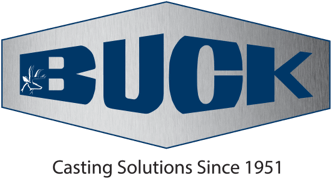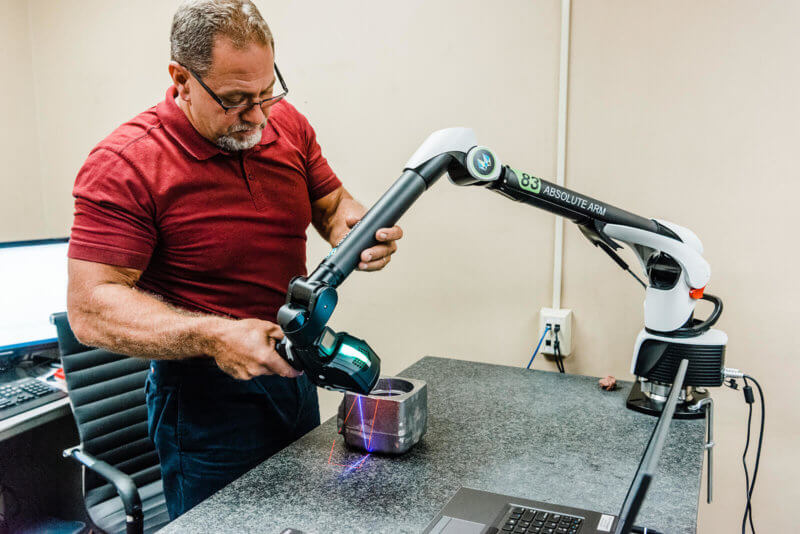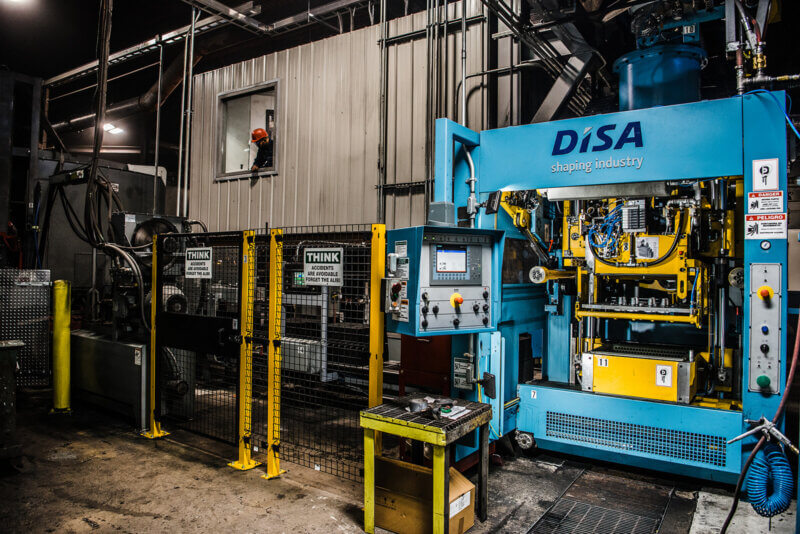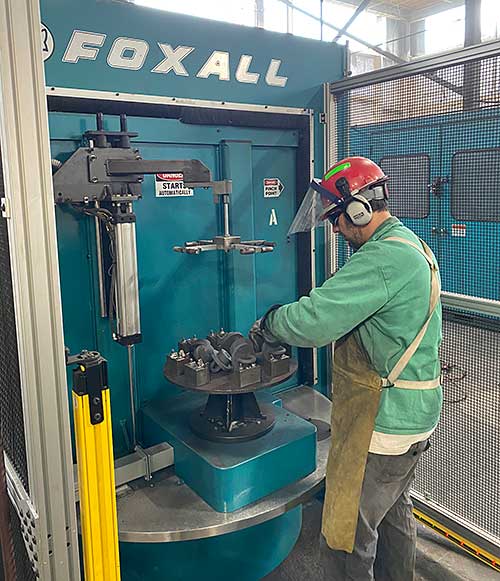Components of Innovation in Best-in-Class Foundries
Odds are that you’re within a few feet of a cast metal part right this very second. Casting is a cost-effective way to produce complex parts and objects that are used in literally thousands of applications. And, despite its long history, the technology of the casting industry continues to evolve improving the quality, durability, and reliability of the parts being manufactured and the safety of the workers who are producing them.
Regardless of the material you need cast – iron, aluminum, brass, etc. – manufacturers need to ensure their castings are of the highest quality and meet their needs and goals.
A quality casting should be functional and aesthetically pleasing while suiting the needs of the customer and application. The customer should be delighted to know their casting will be correct and delivered on time.
Leading foundries are using innovative technology and processes to make sure their work meets or exceeds these customer goals. When considering a foundry to work with, look at how they’re implementing technological improvements, and factor these Components of Innovation into your decision.
Hardware
The first innovation to look for when searching for and evaluating a foundry is hardware. Not only should a foundry’s machines and systems be maintained and continuously monitored to ensure the right end result, but they should be introducing new technology as it becomes available to increase quality and productivity, as well as optimize their capabilities and ability to deliver.
Equipment comes in many shapes and sizes and should all work together. A best-in-class foundry might employ the following machines in their production process:
- Hexagon Absolute 7-axis Arm with both probing and laser scanning capabilities to help with data capture and quality assurance.
- The arm allows our engineers to accurately measure tools and castings to identify any necessary adjustments.
- The arm allows our engineers to accurately measure tools and castings to identify any necessary adjustments.
- Spectrometers to analyze elements of the iron’s chemical makeup to ensure that it meets specifications.
- Buck Company’s Metallurgy Lab has not one but TWO of these at our foundry.
- Carbon/Sulphur Analysis machines like the Leco CS744. These devices work in tandem with the Spectrometers by accurately analyzing the carbon and sulfur makeup in the materials which is difficult to measure with the Spectrometers.
- DISA machines
- We use our 3 DISA machines a bit differently than other foundries. While not a common practice in jobbing foundries, our automatic core-setting option allows for more efficiency in the molding process and is safer for our employees.
- We use our 3 DISA machines a bit differently than other foundries. While not a common practice in jobbing foundries, our automatic core-setting option allows for more efficiency in the molding process and is safer for our employees.
- Autopour system. This improves the quality and consistency of the iron through temperature control at pouring. This also increases production efficiency by providing a continuous flow of metal to molds.
- Automated Casting Finishing Cells and Grinding Stations. They provide a more consistent finish to castings, increased throughput, and a safer work environment.
- Fun fact: While visiting our facility, one of our customers remarked that we‘re “doing stuff with the Foxalls that no one else in the industry is doing” when they saw the innovative way we were fixturing to increase productivity.
- Fun fact: While visiting our facility, one of our customers remarked that we‘re “doing stuff with the Foxalls that no one else in the industry is doing” when they saw the innovative way we were fixturing to increase productivity.
- High-power microscope tied into Image analysis software to provide accurate results for metallurgical issues such as nodule size, shape, and quantity desired. This works by photographing the high-resolution, magnified image of the metal structure and downloading into the software for analysis. This analysis can be used for internal verification as well as formal reports for the customer.
Software
After hardware, the second innovation component you’ll want to take notice of is what software the foundry uses. If the hardware is the muscle doing the heavy lifting, then the software is the brains of the business helping it work smarter and faster.
Software helps engineering recreate defeats to find the issue to fix, minimize variables, and more. Buck Company’s robust software tools streamline processes, increase efficiency, and get products to customers faster. Our suite of software includes:
- Solidification modeling software. At Buck Company, we use MAGMAsoft to model pours so we can predict and prevent pour issues on new jobs. This lets us adjust casting designs to optimize pours gating systems and processes and eliminate areas of concern – like porosity at intersecting geometries.
- Odyssey, a foundry-specific ERP system, provides data that helps manage processes. The tool allows us to track castings throughout the manufacturing process. With it, we can keep our customers informed of progress and report on key metrics like:
- how many castings are made for any given project
- the scrap amount
- where in the process the casting is, and
- when it will be finished
This transparency helps us stay accountable to our customers and maximizes on-time deliveries.
Innovations and Automations
A foundry can have all the hardware and software in the world, but if they aren’t using them optimally, or constantly looking for new ways to improve them, then they’re a step behind. You want a foundry that is innovative.
We’ve already touched on a few ways that Buck Company innovates above, and truthfully, it’s because of our problem-solving-focused team that we’re able to continually change, adapt, and provide industry-leading performance. We routinely ask questions to see how else things can be improved. We strive to:
- Innovate to see how equipment and materials can be improved and/or used more effectively and efficiently
- Promote safety, training, and opportunity for team members
- Problem solve to find the source of issues
Schedule a Foundry Visit
When considering a foundry and looking into its Components of Innovation, the best thing you can do is to go visit the foundry. Walk the foundry floor, see what they do on a daily basis, and look at the equipment they’re using. Is their workforce engaged? Ask to see the data they use to drive decisions, ask how long they’ve had their current lead time, ask about their on-time delivery performance (Buck Company has a 6-week lead time and 96% on-time delivery), and ask to see their systems at work. What are their short and long-term goals and plans? That will help you choose a best-in-class foundry that strives to introduce new ways to produce castings while increasing quality, efficiency, safety, and more.
Are you ready to work with an industry-leading foundry? Contact us to get a quote for your next project.



